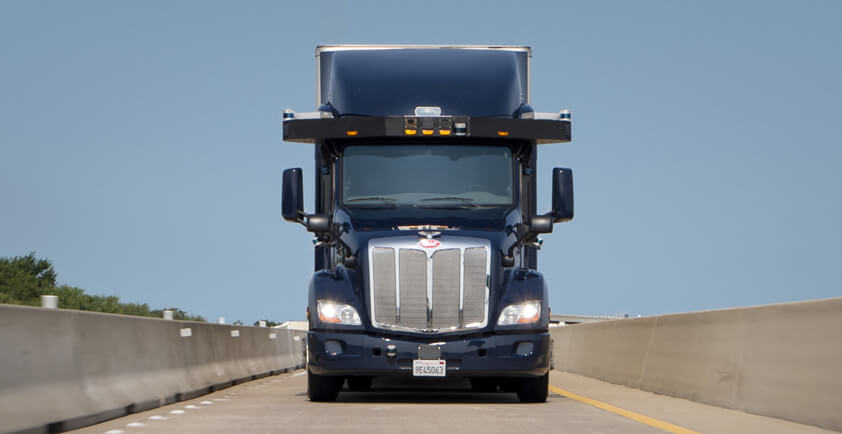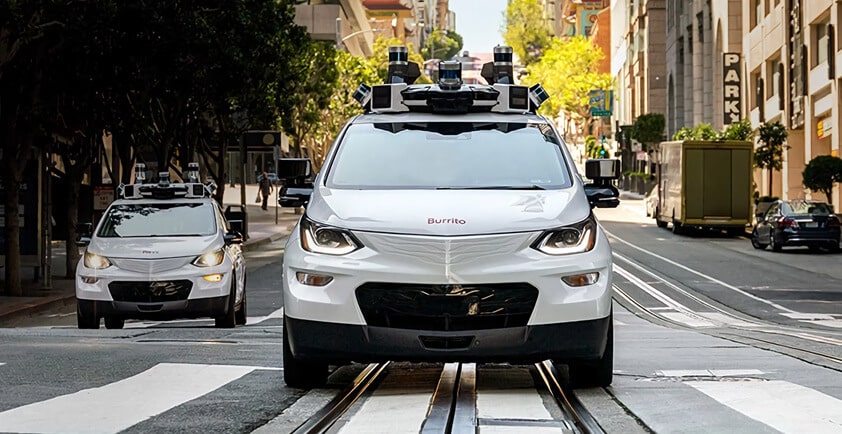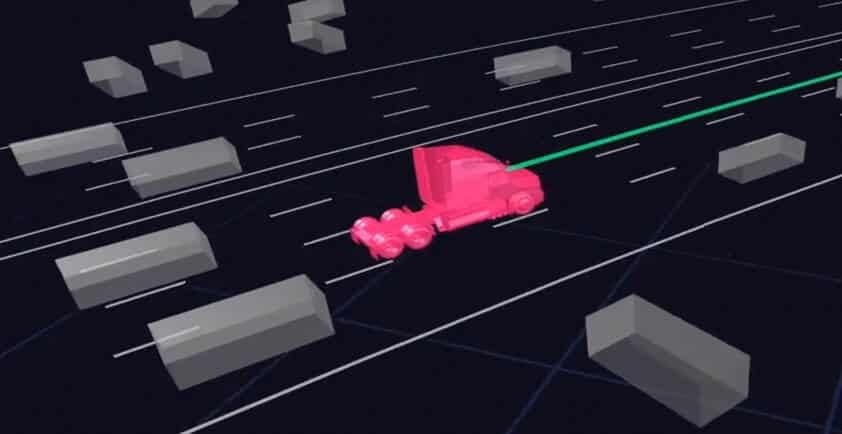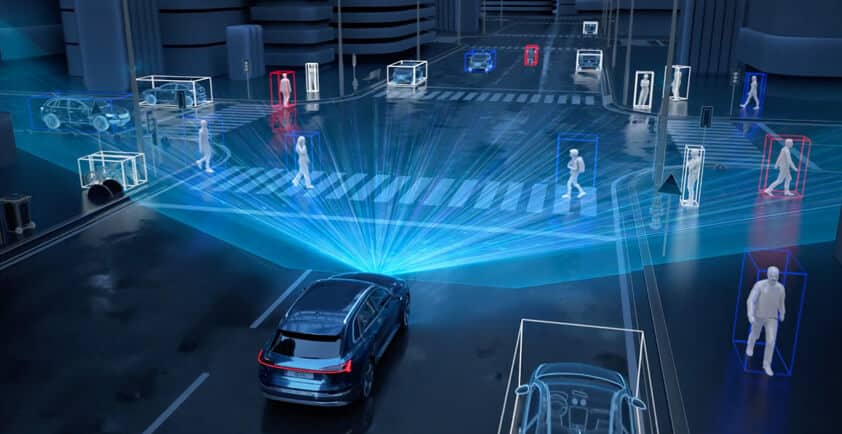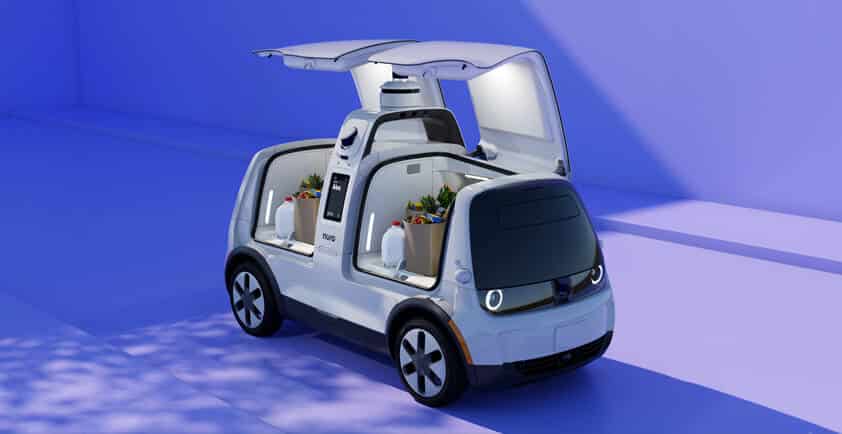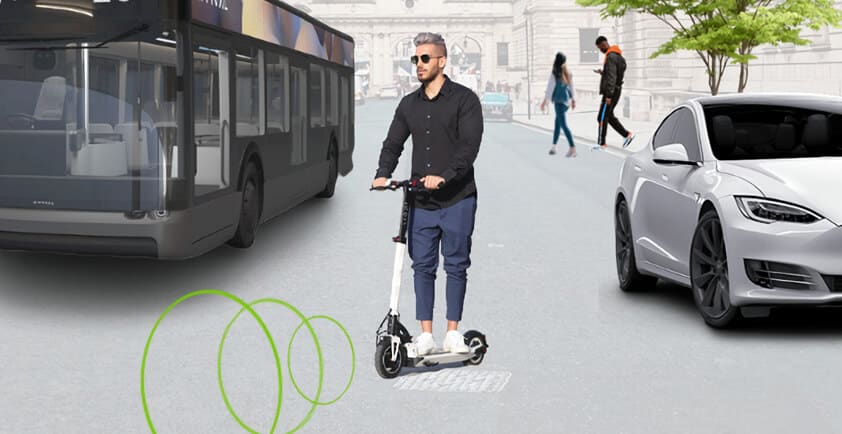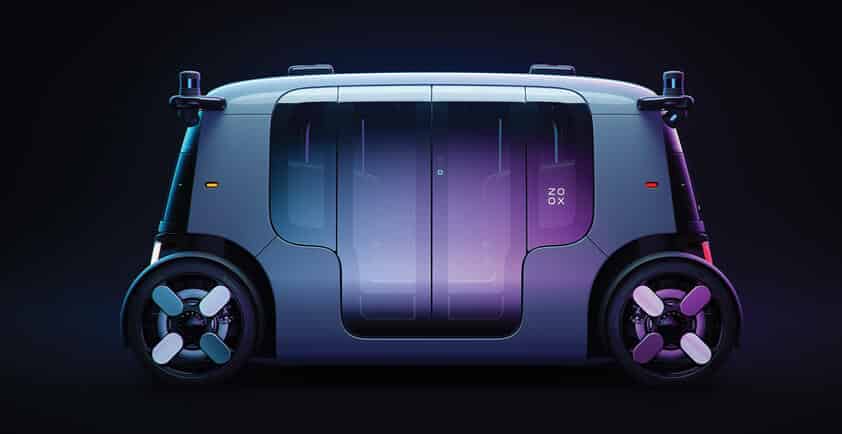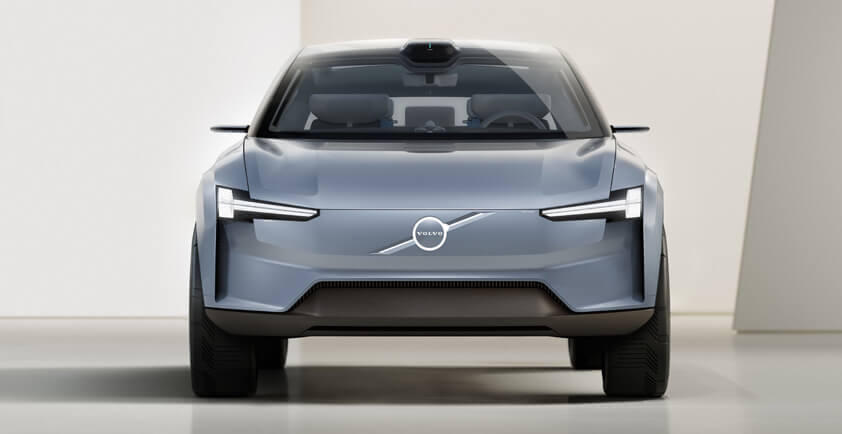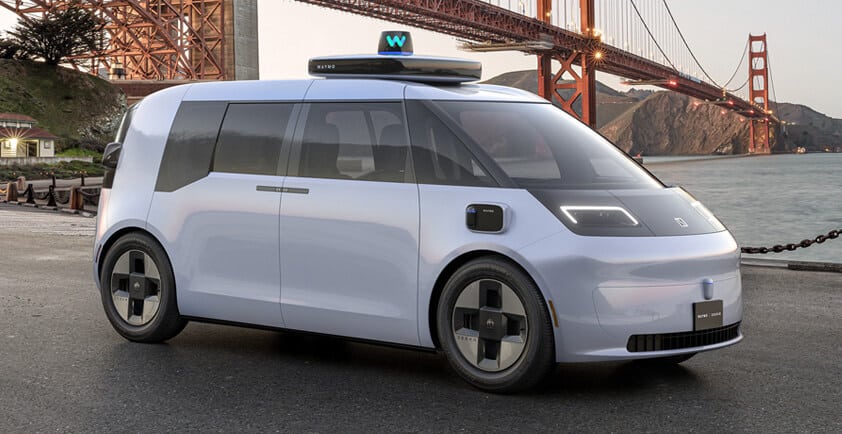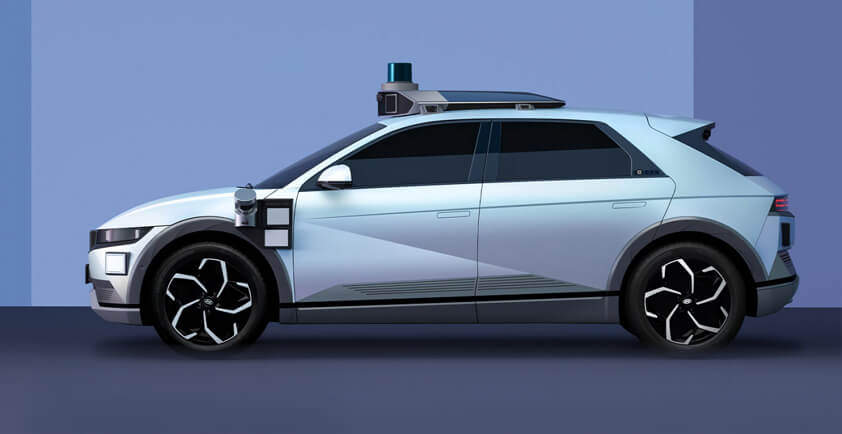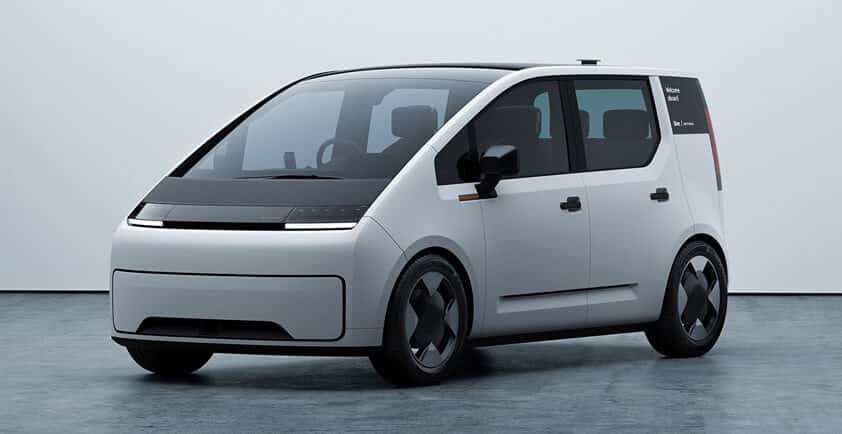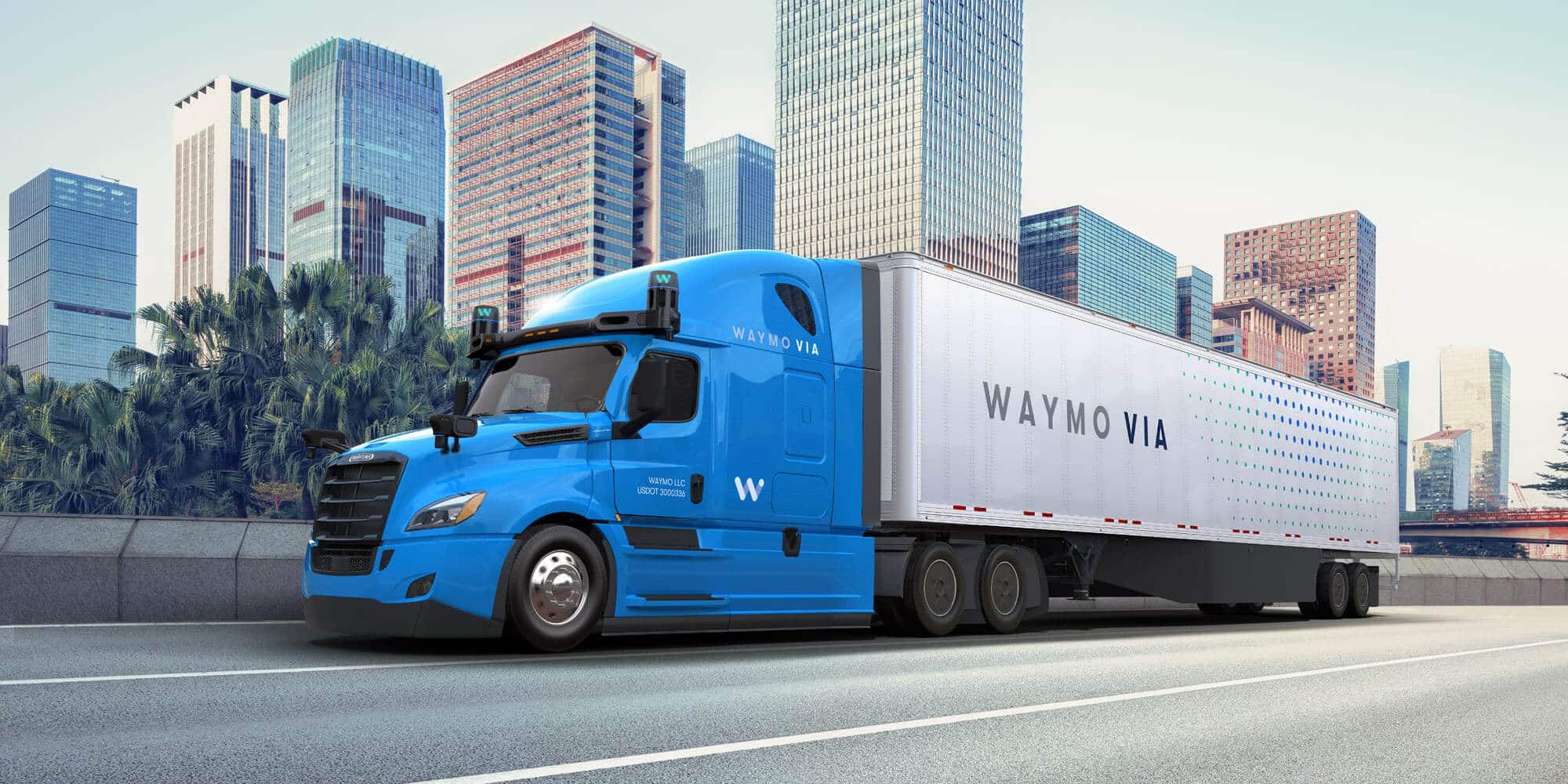
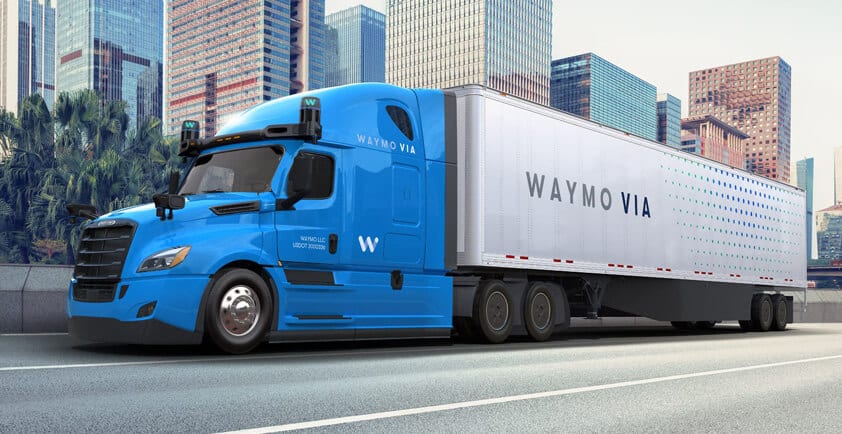
DESIGNED TO DELIVER: BRINGING THE BENEFITS OF OUR 5TH GENERATION HARDWARE TO TRUCKING
At Waymo, we're developing one core autonomous driving platform—the Waymo Driver—consisting of hardware and software, which builds the foundations of a Driver that can scale across multiple geographies, vehicle types, and use cases. Because we engineer an autonomous driver that can navigate these different modalities side by side, system requirements and skills learned from one vehicle platform benefit the other, and vice versa. As more of the first fully redundant, L4 Freightliner Cascadia trucks operated by the Waymo Driver begin hitting the road, we wanted to share how we've designed and engineered our fifth-generation hardware specifically for the rugged life of Class 8 trucking.
Driving a multi-ton commercial truck comes with key considerations
To autonomously drive a Class 8 truck, it is important to have a deep understanding of how different vehicle platforms and their respective Operational Design Domains (ODD)—or the conditions of when and where one drives such as various geographies, speed ranges, time of day, and weather—affect the development of our technology. The Waymo Driver has a head start here, since we already have millions of miles of driving experience that carries over from cars to trucks, but there are some interesting refinements we have to make to operate a big rig:
1. Class 8 trucks require more space and time - Class 8 trucks are inherently larger than passenger vehicles and need more time and space to complete maneuvers, especially if they're transporting a full trailer. Therefore, the Waymo Driver needs to see objects at greater distances and in higher definition to make more informed decisions with enough time to execute a safe, smooth, and predictable trajectory.
2. Class 8 trucks require reliability and redundancies - When traveling hundreds of miles of freeway a day, it's essential to consider the distances between each stop to anticipate unplanned events that may impact forward progress. When no human driver is present, and you’re autonomously hauling literal tons of freight at high speeds, this becomes more important since other kinds of fallback mechanisms—such as redundant braking, steering, compute and sensors—need to serve as backup. That's why we've worked closely with Daimler Truck to build the first-ever redundant, L4 ready chassis specifically for the Waymo Driver. This is an essential step towards commercialization and the foundation of our safe and responsible commercial autonomous trucking deployment.
3. Class 8 trucks have a lot more movement than cars - The cab of a truck, which sits on shock absorbers above the wheels, moves almost entirely independently from the chassis below it, meaning our sensors are further from the road and are subject to more movement and vibrations. Because we are creating a single integrated system with sensors across the vehicle, we have to solve how the cab moves versus how the chassis moves to create a cohesive picture for the Waymo Driver. And since the trailer moves independently of the cab, the weight and distribution of the load it's towing affects the movement of the entire vehicle. Driving with a multi-ton trailer full of liquid looks different than driving with a trailer full of feathers.
While any experienced truck driver is familiar with this fundamental knowledge, it was important for us to take them into account when designing our next generation hardware. Using these key considerations, coupled with our millions of miles of autonomous driving experiences, we set out to design a sensing suite adaptable to the unique task of autonomously driving both Class 8 trucks and cars around urban environments.
Engineering state of the art hardware fit for the long haul
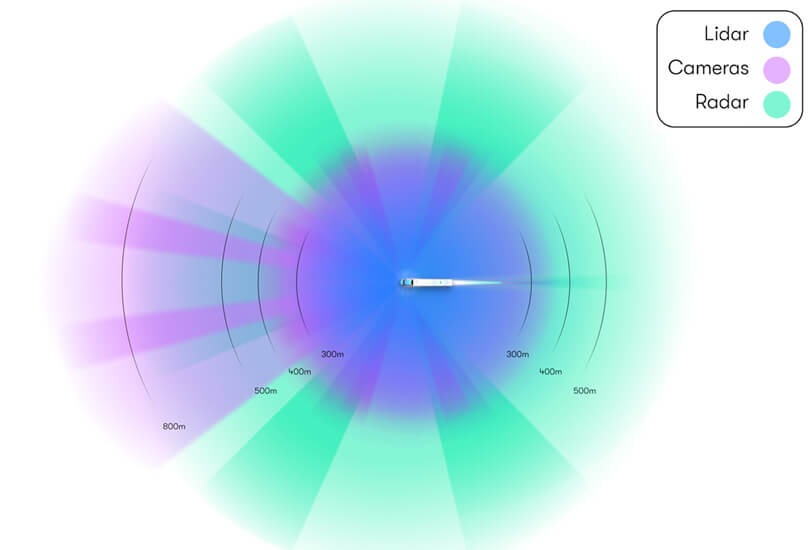
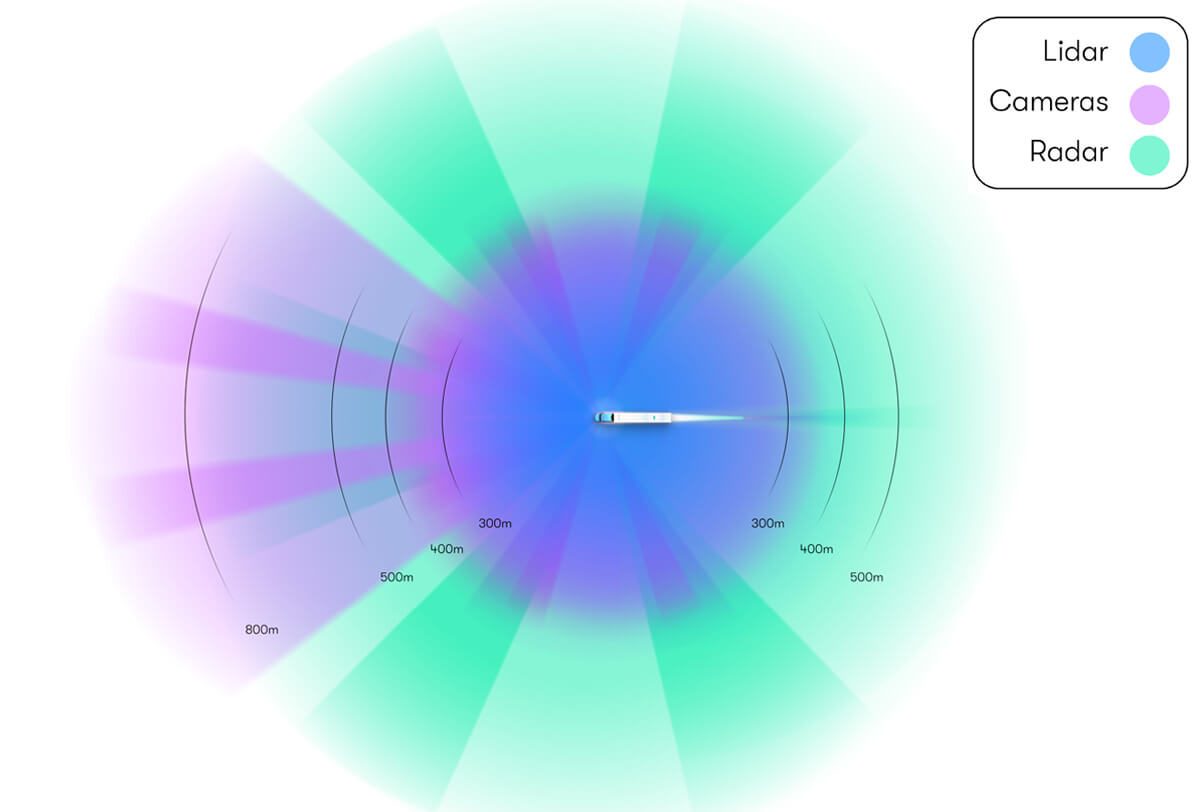
Waymo’s autonomous driving technology— comprised of cameras, lidar, radar, and the advanced Machine Learning (ML) — is more powerful as a whole, than the sum of its parts. Each sensor compliments the others, providing our vehicles with a richer view of the world that makes them safer and more capable. With these capabilities we can detect objects up to 1km in a range of conditions. Here’s a look at how we’ve engineered each of our sensors specifically for the challenges associated with Class 8 trucking.
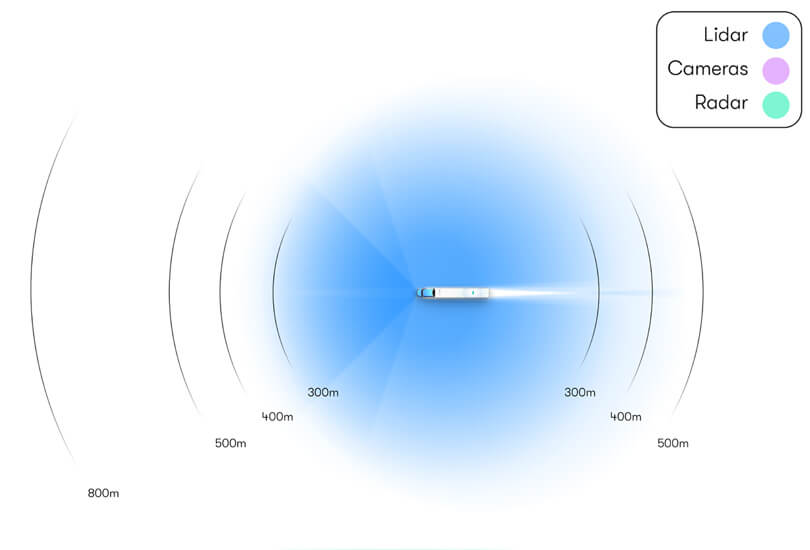
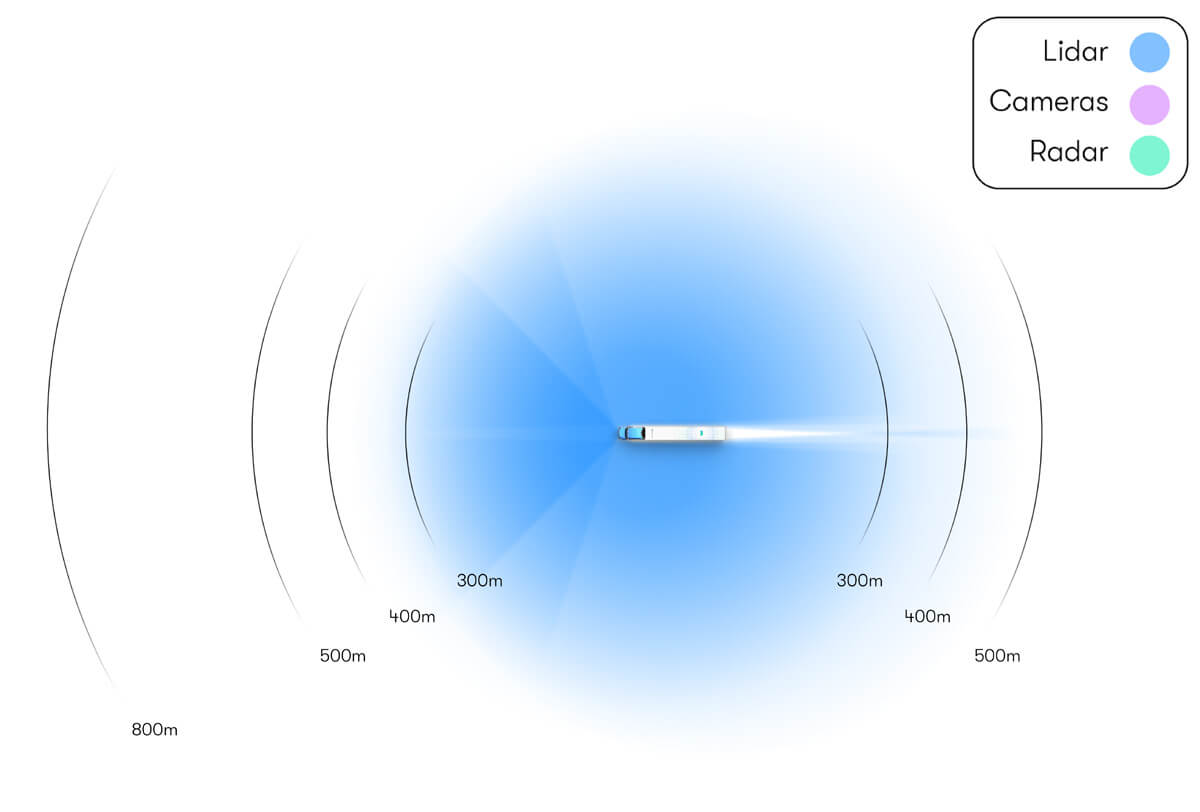
Whether traveling hundreds of miles across I-45 or navigating the hustle and bustle of surface-level streets, lidar is a key sensor for an autonomous driver with its ability to precisely measure the world around it in 3D, regardless of the lighting condition.
The Waymo Driver’s family of lidar, comprising both shorter- and longer-range lidar, is designed to give the autonomous system a unified view of its environment. Since our shorter-range perimeter lidar is placed higher from the ground on our Class 8 trucks than on our passenger vehicles, we’ve enhanced the initial range on our fifth-generation perimeter lidar to see further. This increased range helps the Waymo Driver to see directly around the cab as well as other nearby objects.
Our next-gen lidar also boasts a significant increase in resolution, allowing our Driver to see the world in incredible detail. Not only does this high-fidelity data help the Driver identify objects at greater distances, but it also provides the Waymo Driver a deeper understanding of the weather conditions it's navigating, a challenge on long-haul routes—like the density of the fog or the precipitation level of rain—to know when and how frequently to clean the sensors and how much to adjust its speed.
Cameras
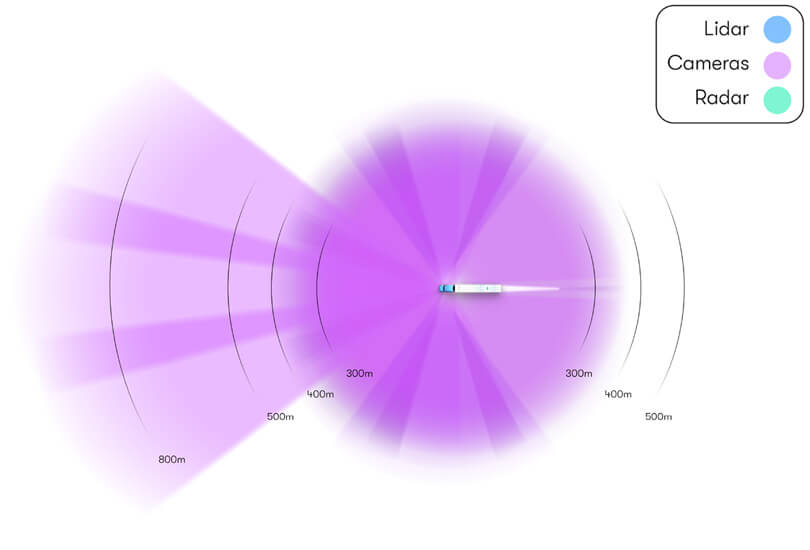

Cameras play an important role in trucking with their ability to provide the Waymo Driver different perspectives of the road—from up close to great distances. Waymo’s cameras are engineered to reliably focus—no matter if it’s freezing cold or sweltering hot out—across an operational range of 100 degrees celsius.
While an autonomous driver needs to see all around the vehicle, because our Waymo Via trucks spend most of their time on long stretches of highway, seeing at greater distances and seeing things sooner allows the Driver to plan a smoother, more predictable driving behavior. So, using our cutting-edge perception, on top of the data collected by our high definition long-range cameras, we have trained the Driver to perceive and classify objects, such as a vehicle, up to 1,000 meters away.
Although cameras are great at perceiving objects at great distances, like a human driver, they can only see objects if they are well lit, and they too can be blinded by the headlights of oncoming traffic or limited in weather conditions. To help detect vulnerable road users at night and in inclement weather conditions, we’ve included thermal cameras in our vision system.
Radar
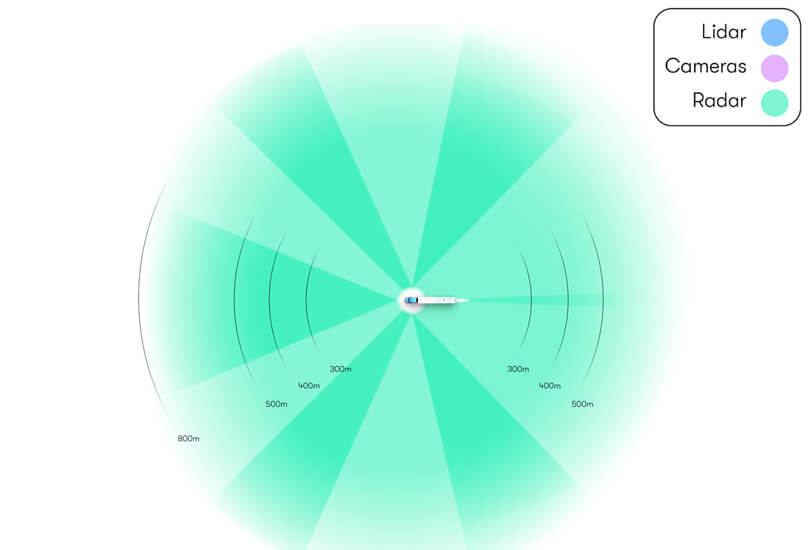
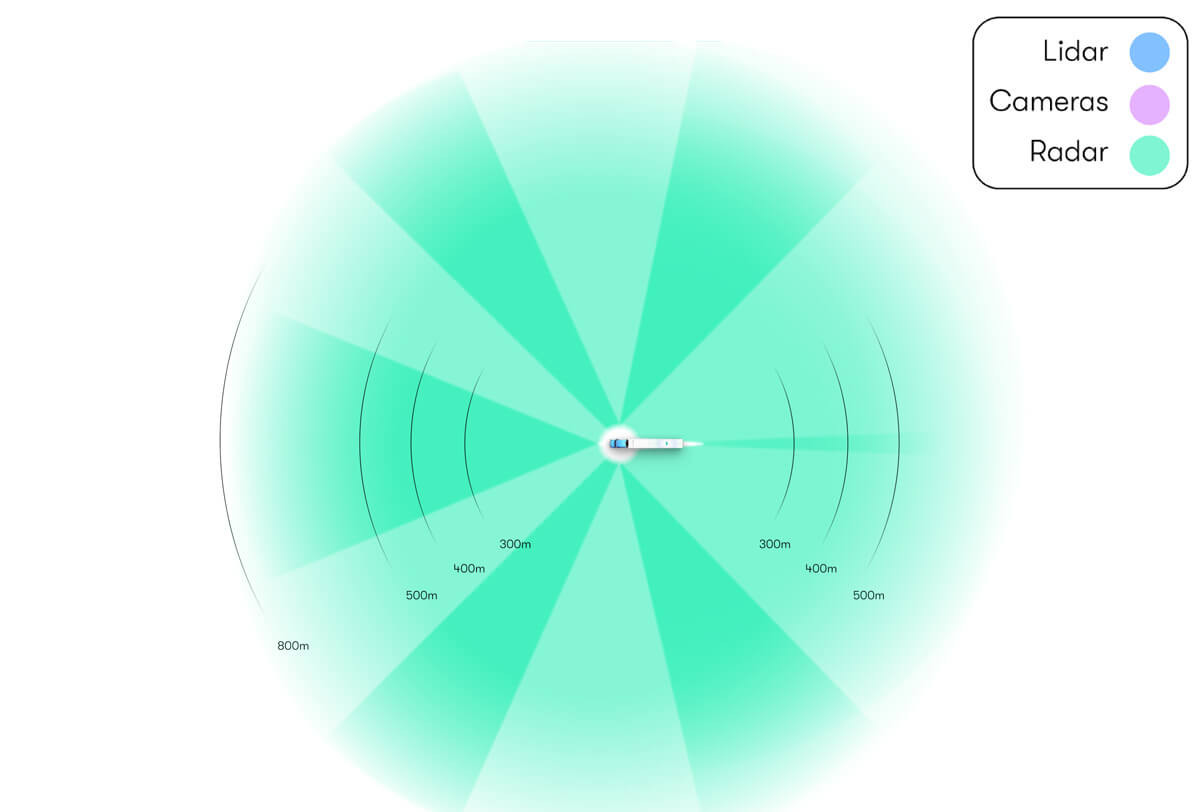
Radars are naturally good at seeing long distances and are relatively unaffected by even the toughest weather conditions, making them the ideal complementary sensor for the task of autonomously hauling a trailer.
Waymo’s state-of-the-art imaging radar boasts unparalleled range and resolution compared to other radars commercially available today. With it, we can detect and track many targets at over 500 meters, providing our technology a higher confidence and ability to reason about and detect both static and moving objects.
As an RF sensor, radar is not affected by background light from over-exposure from a low-angle sun or under-exposure at night, and can directly measure velocity in a single frame whereas other sensors typically infer velocity using multiple frames. Additionally, the sensors’ signal processing technique to see simultaneously in different directions makes it mechanically simple, inexpensive, and reliable.
Sensor cleaning
As we brought down the cost and improved the sensor capability with each generation of our custom-built hardware, we also focused on developing a commercially-viable fully autonomous solution optimized for operational uptime. Freeways are particularly challenging environments for any sensor or driver because of the relatively frequent occurrence of dust, road grime, bug splats, and bird scat.
Because we are designing a system that travels hundreds of miles a day, we developed a robust automated onboard cleaning system that employs various cleaning tools — like custom nozzles, wipers, coatings and more—to keep our sensors clean and the Waymo Driver on the road in some of the harshest environmental conditions. We’ve also developed a comprehensive sensor cleaning policy that detects and dictates when and how to clean the sensors and under what conditions, all without human intervention.
Designing a Driver built for trucking
Because Waymo Via trucks use the same custom-built sensors as our Waymo One cars, just configured differently, they benefit from the same advanced autonomous driving software as our passenger vehicles and leverage the millions of miles we've already autonomously driven on public roads, plus the billions of miles traveled in simulation. To optimize the shared learning from one vehicle platform to the next, we configure the sensors as similarly as possible and utilize the same data to help train our machine learned models more efficiently; however, the geometry of a truck is significantly more complicated to solve from a sensor placement perspective than a passenger vehicle.
For example, integrating a singular central perception dome on top of a passenger vehicle can provide the Waymo Driver with a complete view of the world around it. That same approach doesn't work for a truck because the vehicle is already as tall as we’d want, and there are actually limitations for making them higher—especially to clear an overpass! Additionally, by putting sensors on the roof of your cab, you could potentially have blind spots next to the vehicle. Therefore, instead of having one central perception dome, we created a single horizontal structure with integrated sensors across the truck's cab.
This approach provides a number of benefits to the Waymo Driver.
> For one, with the additional movement from the cab, the horizontal beam provides a rigid base for a number of our sensors enabling us to easily generate a cohesive view around the vehicle, regardless of how bumpy a road might be or how tilted the cab is as the Driver completes a wide turn.
> Then, because there are no sensors on the trailers we transport on behalf of our partners, the horizontal structure and our perimeter sensing pods allow us to push our sensors out to see around it. It would be like the equivalent of a human driver leaning out their window to look around the trailer, but at all times.
> Additionally, with a long range lidar balanced on each side of the sensor bar, powered by advanced ML algorithms, the Waymo Driver can track the movement of the trailer it's driving, whether its being blown by strong winds or completing a turn, as well as make informed inferences about what could be occluded by it.
The horizontal structure’s distinctive appearance also makes the Waymo Driver distinguishable; so no matter if you’re a fellow human truck driver or a passenger vehicle driving along a truck operated by the Waymo Driver, you’ll easily be able to recognize the technology and trust it, knowing that it’s already been tested and proven over 12+ years of experience across Waymo’s different modes of transportation.
On the road to Goods Only
While we are just sharing details about the design of our Class 8 trucks now, our next-generation Waymo Driver has been at work on trucks for some time. In fact, it's already been integrated and tested on our test fleet of Peterbilt trucks, which are already delivering freight on behalf of our partners such as J.B. Hunt and UPS, and autonomously driving millions of miles a day in simulation via our SimulationCity.
We've also been busy completing builds of our first, redundant Cascadia Freightliners at Waymo Detroit, so they too can begin carrying freight on behalf of partners. Over the coming months, the first of these Waymo Via trucks will be put to the test at our closed course testing facilities at Castle Air Force Base and TRC in Ohio, as well as traversing highways across the Southwest. But before that, they're taking a quick pit stop at CES 2022, so if you're there, come stop by our booth and give us a big wave or arm pump!
Author - Satish Jeyachandran, Waymo’s Head of Hardware
